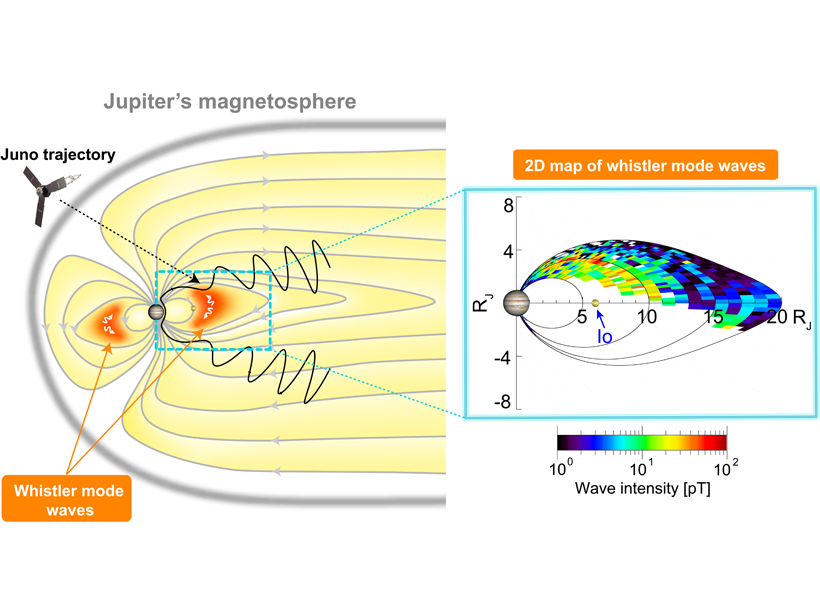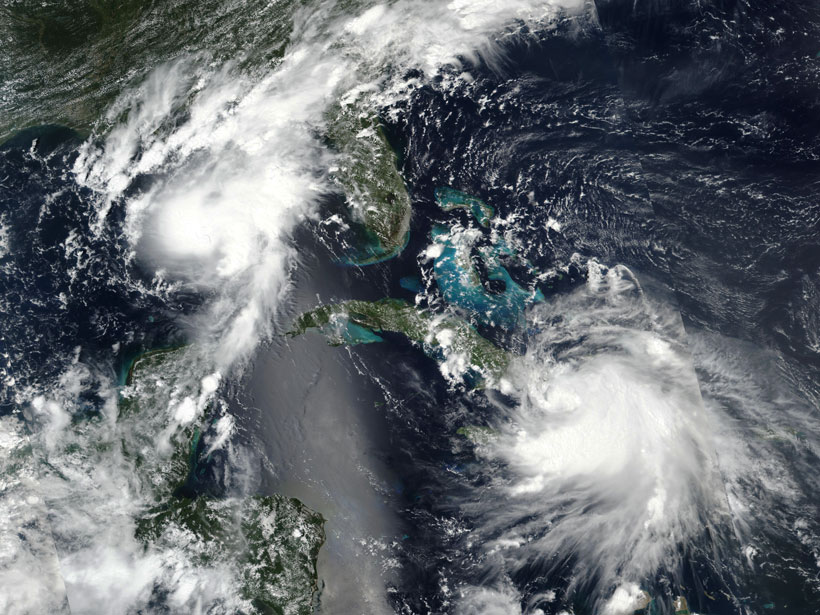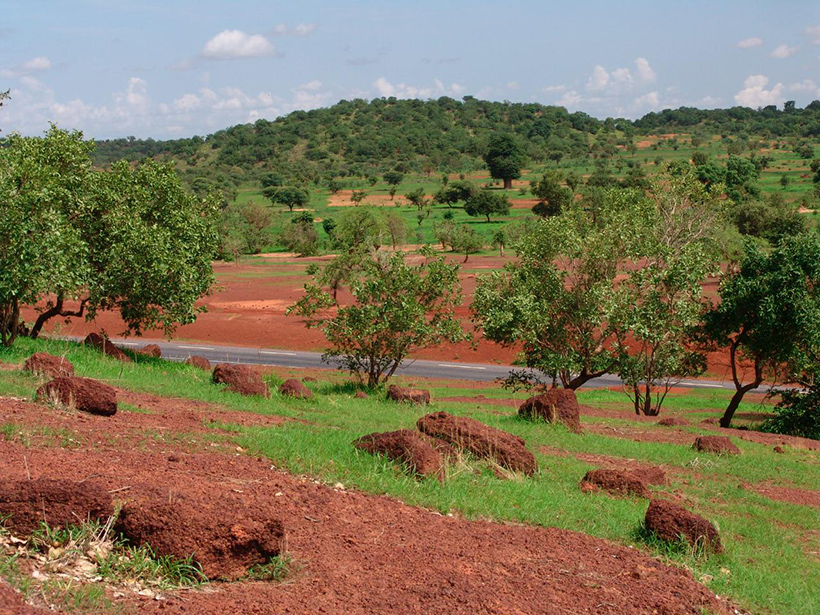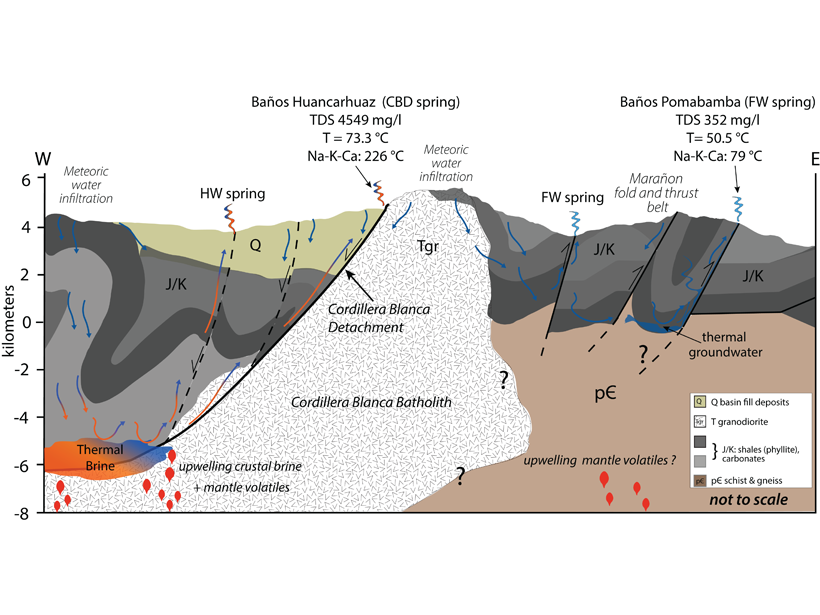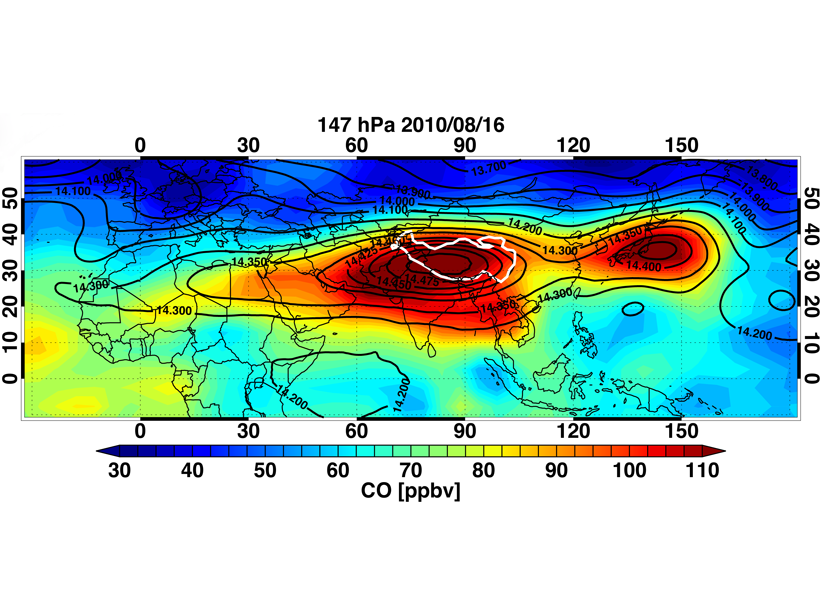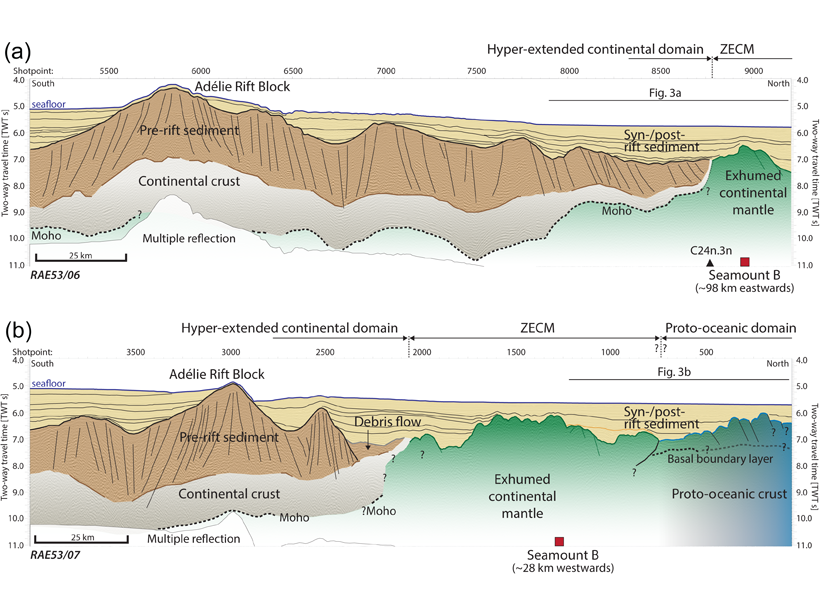NASA’s Juno spacecraft is “hearing whistles” all over the place on Jupiter, a type of natural plasma waves called whistlers that are sometimes associated with atmospheric lightning.
CC BY-NC-ND 2020
Storms Interact but Rarely Merge into Bigger Tempests
The Fujiwhara effect—complex interactions between large storms nearby each other—can steer hurricanes and tropical storms but doesn’t typically create colossal tempests.
Los Costos Ecológicos de Remover las Plataformas Petroleras Mar Adentro en California
Las plataformas de perforación de petróleo- y gas-mar adentro son hábitats ricos para peces. Eliminarlas por completo resultaría en una pérdida del 95% de biomasa de peces, revela una nueva investigación.
Mathematical Insights into the West African Monsoon
A tool from dynamic systems theory is helping atmospheric scientists identify how dust and moisture mix over West Africa.
Structural Style Controls Crustal Fluid Circulation in Andes
Variations in hot spring geochemistry from adjacent mountain ranges with different styles of faulting highlight the influence of crustal-scale structures on circulating fluids in the Peruvian Andes.
Planning a Sustainable Future for Earth’s Oceans
Ocean experts are engaged in a long-term effort to envision, develop, and implement best practices for meeting today’s needs while preserving ocean resources for future generations.
When Chemistry Lends a Hand to Dynamics
Chemical signature and chemical transport analyses help understand the dynamics of the Asian Summer Monsoon.
Some Farm Animals Might Have a Sense About Impending Earthquakes
Stabled animals seem to grow fidgety in the hours before an earthquake, whereas their free-range counterparts show no discernible difference in behavior.
New Data from Earth’s Largest Non-Volcanic Rift Margin
Seismic reflection images combined with petrological data provide new constraints on the nature of the basement in the enigmatic Australia-Antarctic oceanic-continent transition zone.
Characteristics of Polar Sea Ice in Latest Climate Models
Sea ice area in CMIP6 is similar to previous versions while its sensitivity to external forcing is subtly different and closer to observations, but still not in step with global surface temperature.

